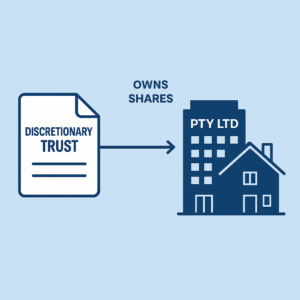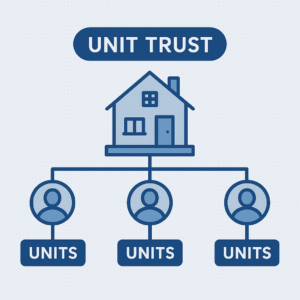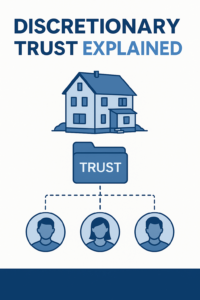Case Study 2: How a Self-Employed Florist Restructured into a Trust & Corporate Beneficiary for Tax Efficiency & Asset Protection

When you run a small business, every dollar counts. For self-employed Australians, understanding the right business structure can be the difference between paying unnecessary tax and building long-term wealth safely.
In this case study, we’ll walk you through how a self-employed florist transformed her business structure — moving from a sole trader to a Discretionary Family Trust with a Corporate Beneficiary — achieving significant tax efficiencies and improving asset protection.
The Problem: Growing Profits & Higher Tax Bills
Our client, a talented florist running her own boutique business, had been operating as a sole trader for several years. As her business flourished, so did her profits — but so did her personal tax bills.
Without a flexible structure, every dollar of profit was taxed at her marginal personal tax rate, pushing her into higher tax brackets. She was looking for a smarter way to manage her business income, retain more earnings for growth, and protect her hard-earned assets.
The Solution: Family Trust + Corporate Beneficiary
After careful planning, we recommended restructuring her business into a Discretionary Family Trust with a Corporate Beneficiary (often called a “bucket company”). Here’s how it works:
1. Paying Herself a Market Salary
The florist continues to work full-time in her business. Through the trust, she pays herself a market salary for her personal income needs. This salary is taxed at her individual tax rates as normal.
2. Distributing Remaining Profits to the Corporate Beneficiary
After paying her salary, the remaining profits in the trust are distributed to a Corporate Beneficiary, which pays a flat company tax rate of 25% (for base rate entities).
This allows excess profits to be retained within the company structure, reducing immediate personal tax exposure.
3. Asset Protection Benefits
By parking funds in a separate company, she also gains asset protection. The retained earnings stay within the corporate beneficiary, safeguarded from personal liabilities and risks.
What Happens When She Wants to Use the Money?
Option 1: Leave it in the Company
The retained earnings can remain in the bucket company indefinitely. They’re available for future investments, business expansion, or emergencies. Importantly, this does not trigger any further tax until she decides to extract the funds personally.
Option 2: Borrow Funds Temporarily (Without Triggering Division 7A)
If she wants to temporarily use these funds for personal purposes, she can do so by borrowing from the company. As long as the borrowed amount is returned before the company’s lodgement day, it will not trigger Division 7A deemed dividend rules. This provides short-term flexibility without additional tax consequences.
Option 3: Declare Dividends When the Timing is Right
When she wants to permanently extract funds for personal use, the company can declare a fully franked dividend. While this may require her to pay top-up tax (depending on her personal tax rate), there are strategic advantages:
If she withdraws funds in a year where she has low or no other taxable income, she might even receive a refund of franking credits.
The timing of dividends can be planned to minimise overall tax impact.
Key Benefits of This Structure
✅ Lower Company Tax Rate (25%) on retained profits
✅ Flexible Timing to extract profits when personally tax-effective
✅ Asset Protection via separation of business and personal assets
✅ Cash Flow Control without immediate personal tax hits
✅ Opportunity for Franking Credit Refunds in low-income years
Important Considerations
While this structure offers many benefits, it’s not suitable for everyone. Key considerations include:
Ongoing compliance and costs of maintaining a trust and corporate structure
Careful management of Division 7A loan rules
Understanding dividend timing and personal tax consequences
Professional advice tailored to your situation is essential.
Final Thoughts
For this florist, restructuring her business through a family trust with a corporate beneficiary provided significant tax efficiencies and stronger asset protection. By strategically managing profit distributions and dividend timings, she gained greater control over her wealth — setting herself up for long-term financial success.
📢 Disclaimer:
This blog is general information only and does not constitute financial, tax, or legal advice. You should consult with a qualified professional before acting on any of the information provided. Trustify.au is not responsible for any decisions made based on this content. Every business situation is unique — professional advice is essential.
Don’t forget to subscribe to our newsletter for more case studies and practical tips on business structures, trusts, and tax strategies.
If you have any questions about how trusts or corporate beneficiaries could benefit your business, reach out to the team at Trustify.au — we’re here to help.
Others
-
October 20, 2025 Buying Property Under Your Personal Name in Australia: Pros and Cons
-
October 18, 2025 Service Trust Business Structure in Australia




